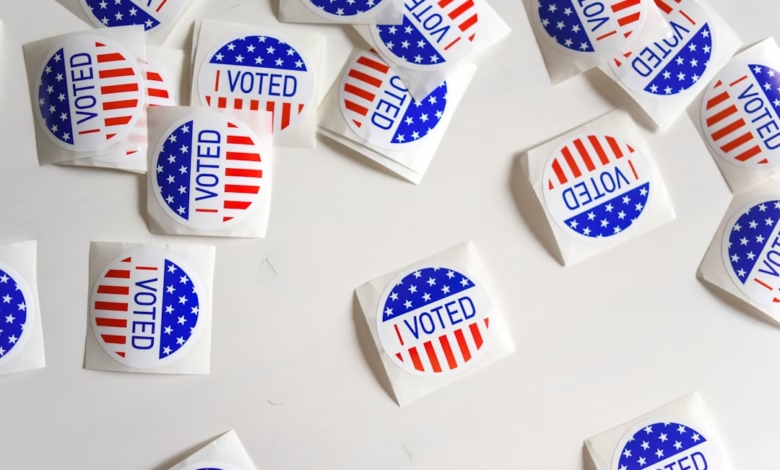Comprehensive Guide to Debt Relief Programs: Government and Private Options for Managing Personal Debt

In today's financial landscape, managing personal debt can feel overwhelming, especially with the rising costs of living and unexpected expenses. Whether you're grappling with credit card debt, student loans, mortgage debt, auto loans, or even medical debt, the weight of financial stress can be challenging to bear. Fortunately, there are various debt relief programs available that can help alleviate the burden. This article delves into the different options for debt relief, comparing government initiatives with private programs designed to assist individuals in managing their financial obligations.
We'll explore the nuances between secured and unsecured debt, the importance of understanding your debt-to-income ratio, and effective strategies for navigating high-interest debt through debt consolidation and settlement. Additionally, we will discuss when it may be appropriate to consider more drastic measures such as loan forgiveness or bankruptcy. By equipping yourself with the right knowledge and debt strategies, you can take control of your financial future and work towards a sustainable path to debt repayment and financial wellness.
- 1. Understanding Debt Relief Options: Government vs. Private Programs for Personal Debt
- 2. Navigating High-Interest Debt: Effective Strategies for Debt Consolidation and Settlement
- 3. Loan Forgiveness and Bankruptcy: When to Consider Extreme Measures for Financial Stress Relief
1. Understanding Debt Relief Options: Government vs. Private Programs for Personal Debt
When facing financial stress due to various obligations, understanding the different debt relief options available is crucial. Both government and private programs offer solutions tailored to various types of personal debt, including credit card debt, student loans, mortgage debt, auto loans, and medical debt.
Government programs often provide structured relief through initiatives such as loan forgiveness for federal student loans or specific refinancing options that lower interest rates. These programs are designed to help individuals manage their debts, especially for high-interest debt like credit card debt or payday loans. For example, the Income-Driven Repayment plans for student loans adjust monthly payments based on the borrower's debt-to-income ratio, providing a manageable approach to repayment.
On the other hand, private debt relief options include debt consolidation and debt settlement services. These programs can be effective for individuals struggling with unsecured debt, such as credit card debt and medical bills. Debt consolidation involves combining multiple debts into a single loan, often with a lower interest rate, which simplifies monthly payments and can reduce overall financial strain. Conversely, debt settlement can negotiate with creditors to reduce the total amount owed, though it may impact credit scores.
For those considering more drastic measures, bankruptcy may be an option, providing a fresh start by discharging certain debts. However, this process should be approached with caution, as it can have long-lasting effects on one's financial standing.
Debt management strategies, such as the debt snowball method and debt avalanche method, can also aid in repayment. The debt snowball method focuses on paying off the smallest debts first, while the debt avalanche method prioritizes high-interest debts. Both strategies help to create a structured repayment plan, reducing the overwhelming nature of debt collection.
In summary, whether opting for government or private debt relief programs, a clear understanding of the available options is essential. Each method has its advantages and disadvantages, and the best choice will depend on individual circumstances, including the type of debt, overall financial goals, and personal preferences. Seeking out credit counseling can also provide valuable insights and help individuals navigate their specific debt relief options effectively.
2. Navigating High-Interest Debt: Effective Strategies for Debt Consolidation and Settlement
High-interest debt can create significant financial stress, making it essential to explore effective strategies for debt consolidation and settlement. Whether dealing with credit card debt, student loans, mortgage debt, or medical debt, understanding your options can lead to improved financial health.
Debt consolidation is a popular approach that involves combining multiple debts into a single loan, ideally with a lower interest rate. This can simplify repayment and reduce the overall monthly payment, improving your debt-to-income ratio. For those facing high-interest debts, such as payday loans or credit card debt, debt consolidation can be a lifeline. Various options exist, including secured debt consolidation loans, which require collateral, or unsecured options that do not.
Another strategy to consider is debt settlement. This involves negotiating with creditors to pay a reduced amount to settle your debts, which can be particularly useful for those in severe financial distress. However, it’s essential to understand that while this option can lead to significant savings, it may also impact your credit score and could have tax implications if the forgiven amount is deemed taxable income.
For individuals struggling with multiple types of debt, such as auto loans, business debt, or medical debt, employing the debt snowball method or the debt avalanche method can be effective. The debt snowball method focuses on paying off the smallest debts first, providing quick wins and motivation. In contrast, the debt avalanche method prioritizes high-interest debts, ultimately saving more money in interest payments over time.
For those considering more drastic measures, such as bankruptcy, it's important to consult with a financial advisor or credit counseling service. These professionals can help you understand your options and create a debt management plan tailored to your unique situation. Loan forgiveness programs may also be available for specific types of debt, particularly student loans, which can alleviate some of the burdens of repayment.
Ultimately, the key to navigating high-interest debt lies in being proactive. Whether through debt refinancing, consolidation, settlement, or effective negotiation with creditors, taking control of your financial situation can lead to a brighter, debt-free future.
3. Loan Forgiveness and Bankruptcy: When to Consider Extreme Measures for Financial Stress Relief
When facing overwhelming financial stress from various debts, it may become necessary to consider extreme measures such as loan forgiveness or bankruptcy. Understanding the implications of these options can be crucial for those grappling with personal debt, particularly when it involves high-interest debt like credit card debt, medical debt, or payday loans.
Loan forgiveness programs can provide significant relief for specific types of debt, notably student loans. For borrowers who qualify, federal and state initiatives can eliminate a portion or even the entirety of their student loan obligations, alleviating a considerable burden. However, loan forgiveness typically requires meeting certain criteria, such as working in public service or fulfilling specific repayment plans. If you're struggling with mortgage debt or auto loans, it's essential to explore all available options, including debt consolidation and refinancing, which can lower your monthly payments and reduce financial stress.
On the other hand, bankruptcy is a more drastic measure that should be considered only after exhausting other debt strategies. Filing for bankruptcy can halt debt collection actions and offer a fresh start, but it has long-term consequences on your credit score and financial future. There are two primary types to consider: Chapter 7, which discharges most unsecured debts, and Chapter 13, which allows for debt repayment plans over three to five years. Understanding the difference between secured debt, like a mortgage or auto loan, and unsecured debt is vital when contemplating this option.
Before deciding on loan forgiveness or bankruptcy, it's wise to assess your debt-to-income ratio and explore credit counseling services. These services can help you devise a structured debt management plan, offering strategies such as the debt snowball method or the debt avalanche method to tackle your debts systematically. Additionally, engaging in debt negotiation with creditors may result in more favorable repayment terms, helping you avoid the extremes of bankruptcy or the complexities of loan forgiveness.
In conclusion, while loan forgiveness and bankruptcy may provide necessary relief from financial distress, they come with significant implications. Weighing all options, including debt settlement and credit counseling, is essential to develop an effective plan for managing and ultimately overcoming your debts.
In conclusion, navigating the landscape of debt relief programs is essential for anyone grappling with personal debt, whether it be from credit card debt, student loans, mortgage debt, or medical expenses. Understanding the differences between government and private relief options can empower individuals to make informed decisions that best suit their financial situations. Effective debt strategies, such as debt consolidation and debt settlement, can provide a pathway to manage high-interest debt more effectively.
For those facing severe financial stress, options like loan forgiveness and bankruptcy should be considered with caution. It's crucial to weigh the pros and cons of each approach, as well as to consult with credit counseling services for guidance tailored to your specific needs. Utilizing methods like the debt snowball or debt avalanche can also enhance your debt management efforts, allowing for a more structured repayment plan.
Ultimately, whether dealing with secured or unsecured debts, embracing a proactive mindset towards debt negotiation and refinancing can lead to a brighter financial future. By taking control of your debt-to-income ratio and exploring all available avenues for relief, you can pave the way for improved financial health and reduced stress. Remember, the journey to financial freedom begins with understanding your options and committing to a strategic plan for debt repayment.
References:
– National Foundation for Credit Counseling. (2023). Understanding Debt Relief Options. Retrieved from [https://www.nfcc.org](https://www.nfcc.org)
– Consumer Financial Protection Bureau. (2023). Managing Debt. Retrieved from [https://www.consumerfinance.gov](https://www.consumerfinance.gov)
– Federal Trade Commission. (2023). Debt Collection FAQs. Retrieved from [https://www.ftc.gov](https://www.ftc.gov)





